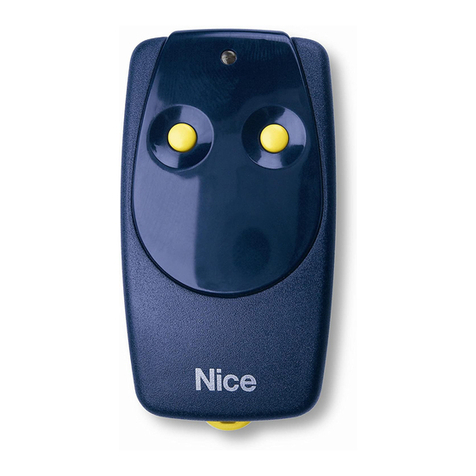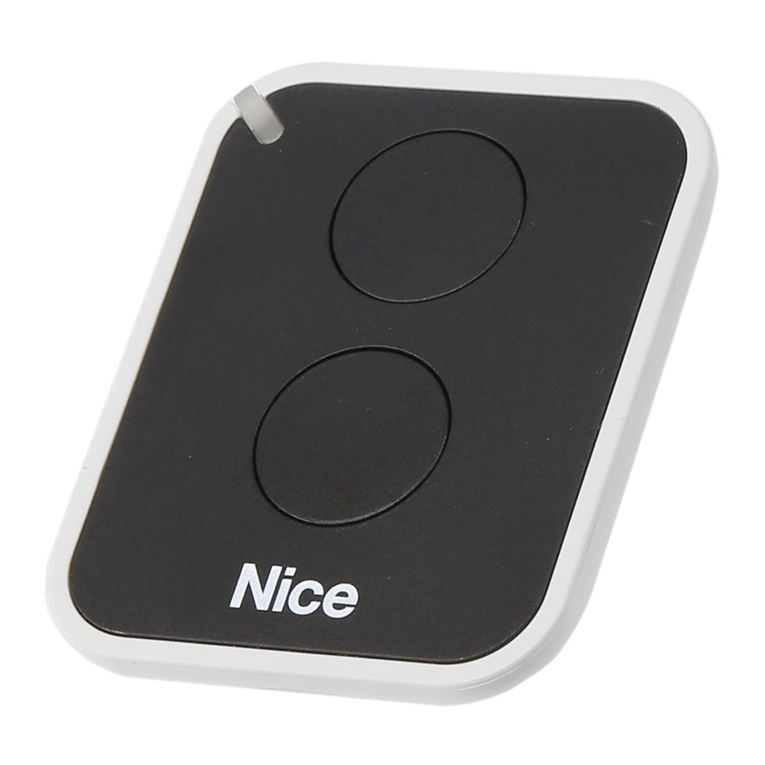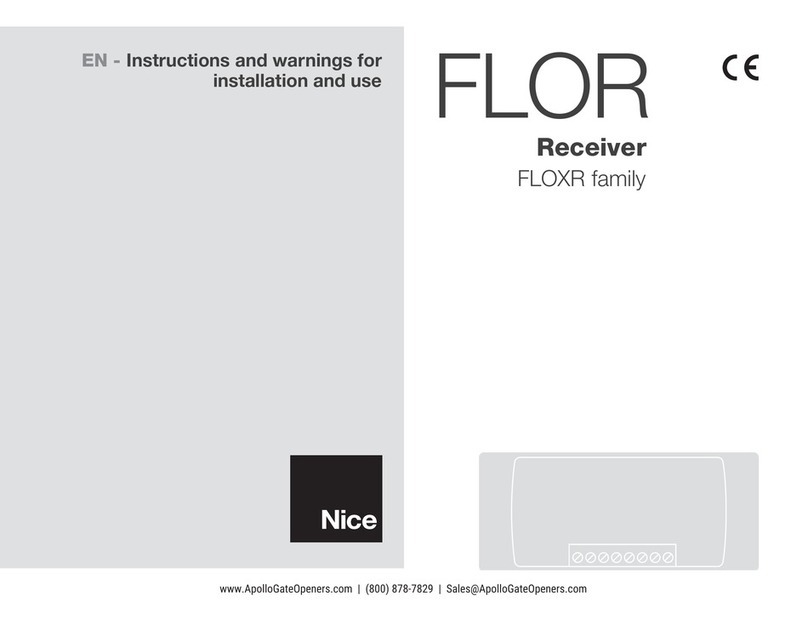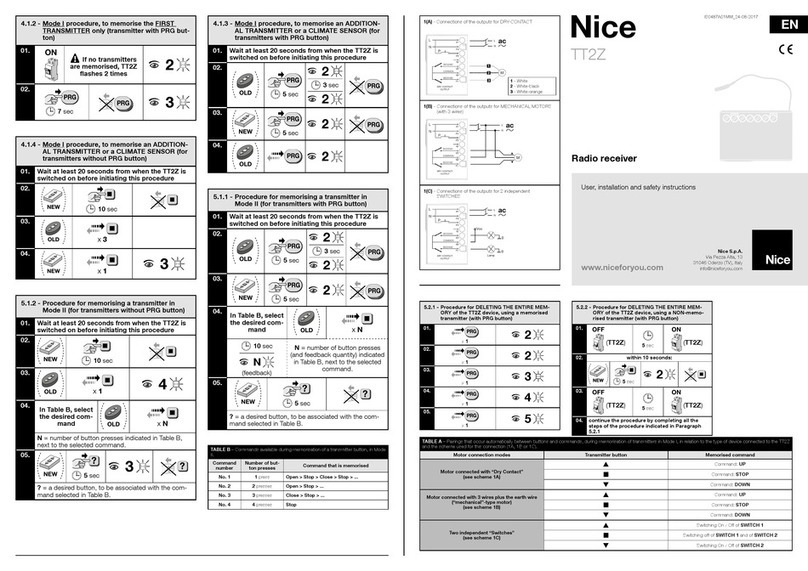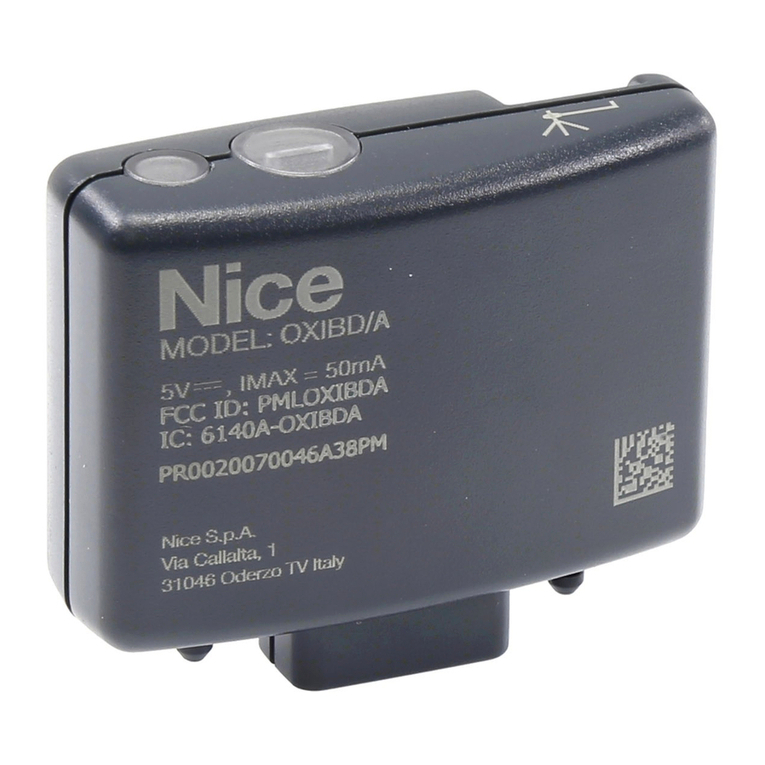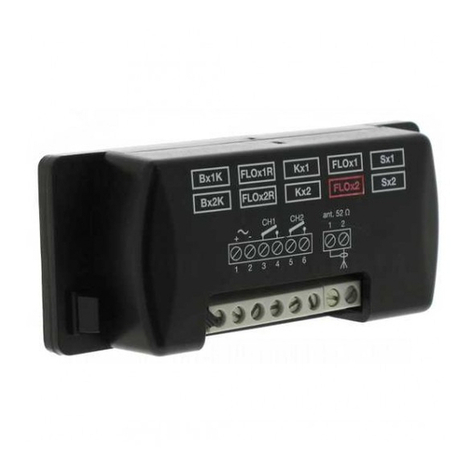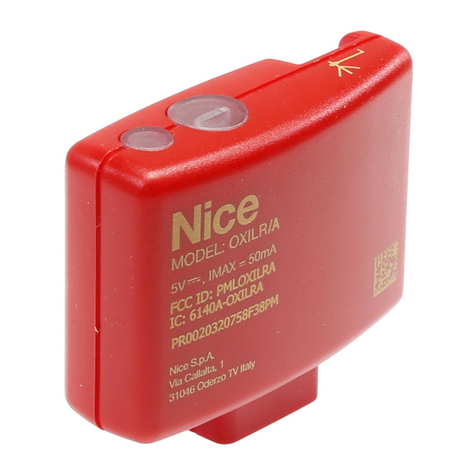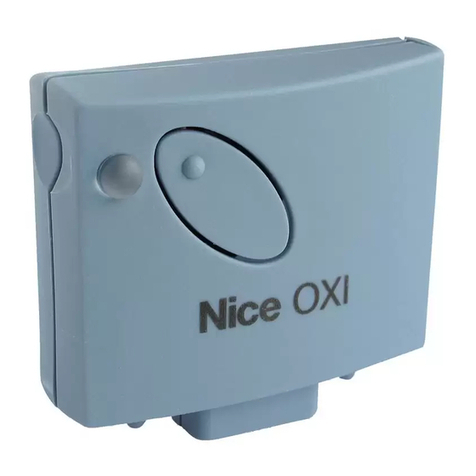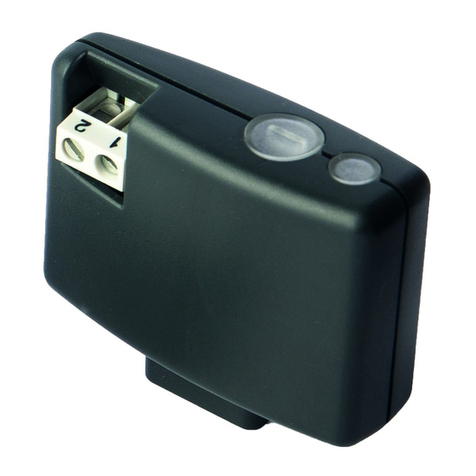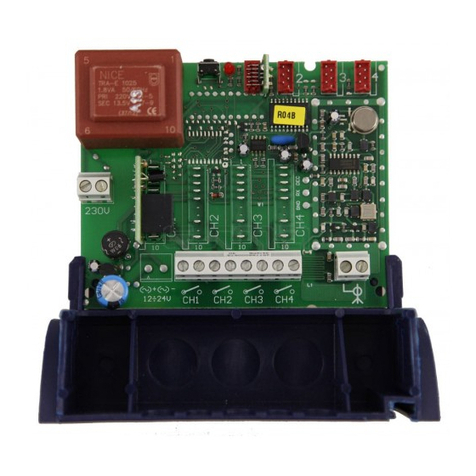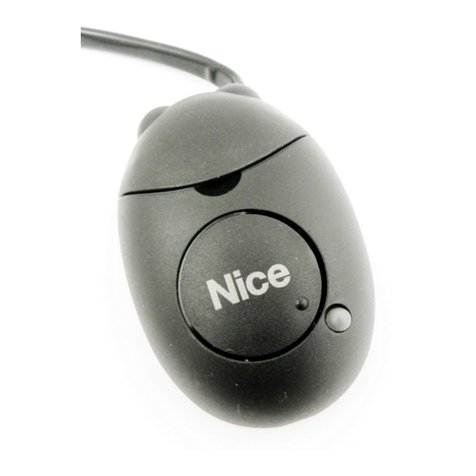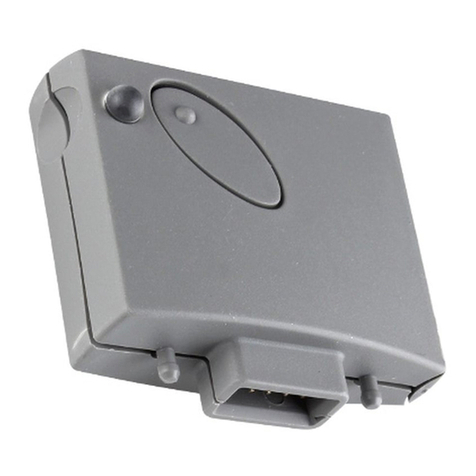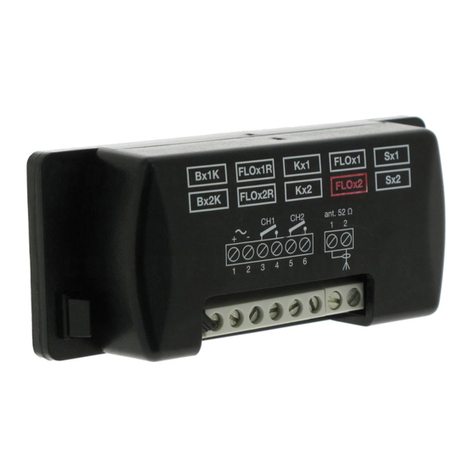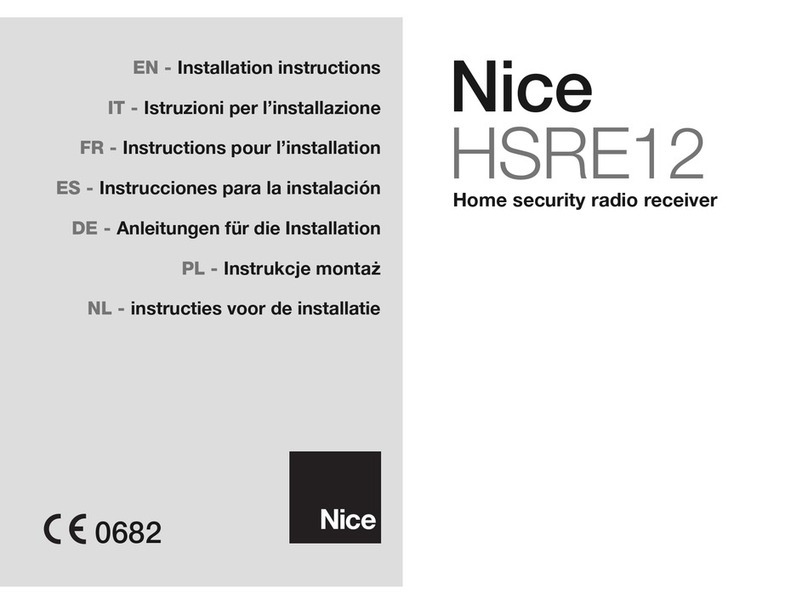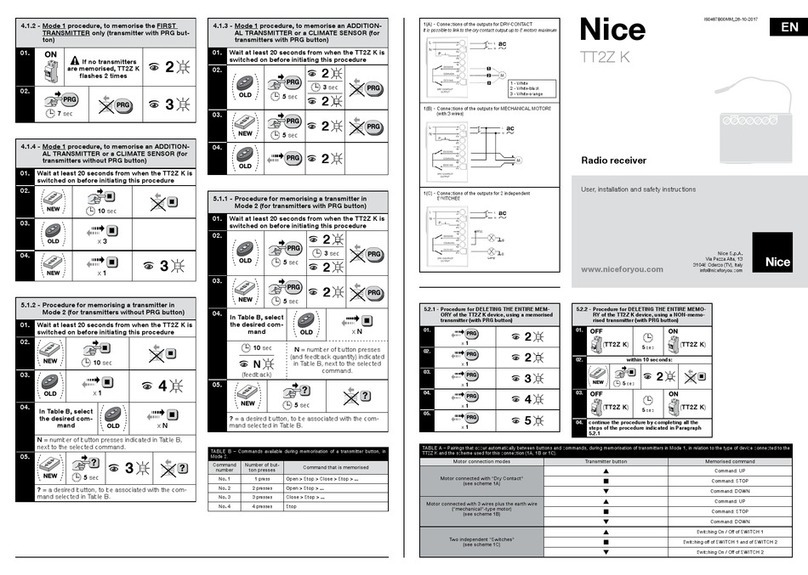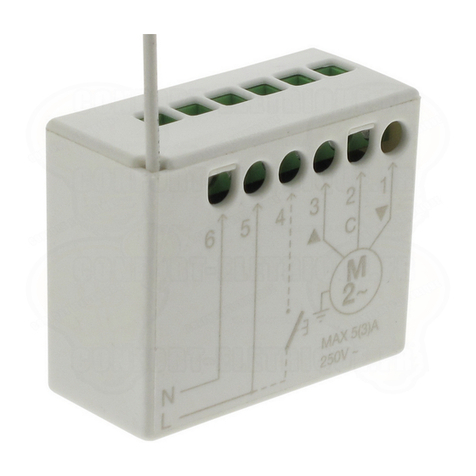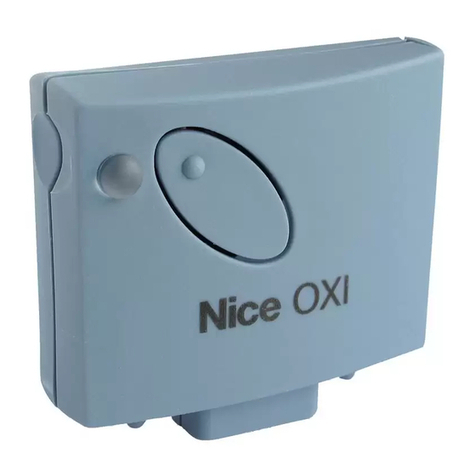
7
EN
as the number identifying the selected function (in our
example, 8 times). On completion, the green Led L1
emits the number of short ashes, equal to the number
of presses on the key (in our example, 8 short ashes);
03. Within 10 seconds, press and hold any transmitter key
to be memorised, until the green led L1 on the receiver
emits the rst of 3 ashes to conrm memorisation.
When these ashes are completed, to memorise a new
key with the same function (also on another transmitter)
press this new key within 10 seconds.
Table A – Association of functions with a transmitter
key
Function 1: activates relay 1 in hold-to-run mode;
Function 2: activates relay 2 in hold-to-run mode;
Function 3: activates relay 3 in hold-to-run mode;
Function 4: activates relay 4 in hold-to-run mode;
Function 5: activates relay 1 in On/Off mode;
Function 6: activates relay 2 in On/Off mode;
Function 7: activates relay 3 in On/Off mode;
Function 8: activates relay 4 in On/Off mode;
Function 9 (note 1): activates relay 1 and 2for bi-direc-
tional motor control (shutters or sun awnings)
Function 10 (note 1): activates relay 3 and 4for bi-direc-
tional motor control (shutters or sun awnings)
Function 11 (note 2): activates relay 1 for time interval set
in “Timer 1”
Function 12 (note 2): activates relay 3 for time interval set
in “Timer 2”
Function 13 (note 1): activates relay 1 and 2for bi-direc-
tional motor control (Venetian blinds)
Function 14 (note 1): activates relay 3 and 4for bi-direc-
tional motor control (Venetian blinds)
Note 1 (Functions 9, 10, 13, 14)
To memorise this function, press any key on the transmitter.
In this way the receiver memorises transmitter keys 1, 2, 3,
(4) simultaneously, conguring them with the following com-
mands: Key 1 = UP / Key 2 = STOP / Key 3 = DOWN / (Key
4= STOP).
To control a motor in both directions, the relays must be con-
nected as shown in g. 5.
• For Function 9 and 10: using the receiver, each time a
command is sent the relays are activated for the interval set
on the timer: Timer 1 for relays 1 and 2; Timer 2 for relays 3
and 4 (to program the timers, see chapter 5.3).
• For Function 13 and 14: using the receiver, each time a
command is sent, the relays remain active while the hold-
to-run key is pressed. However, if the command lasts for
more than 3 seconds, the relays remain active for the time
set on the timer: Timer 1 for relays 1 and 2; Timer 2 for
relays 3 and 4 (to program the timers, see chapter 5.3).
Note 2 (Functions 11, 12)
Using the receiver, each time a command is sent the relays
are activated for the interval set on the corresponding timer (to
program the timers, see chapter 5.3). Before the time elapses,
simply send a new command to restart the timer. On the other
